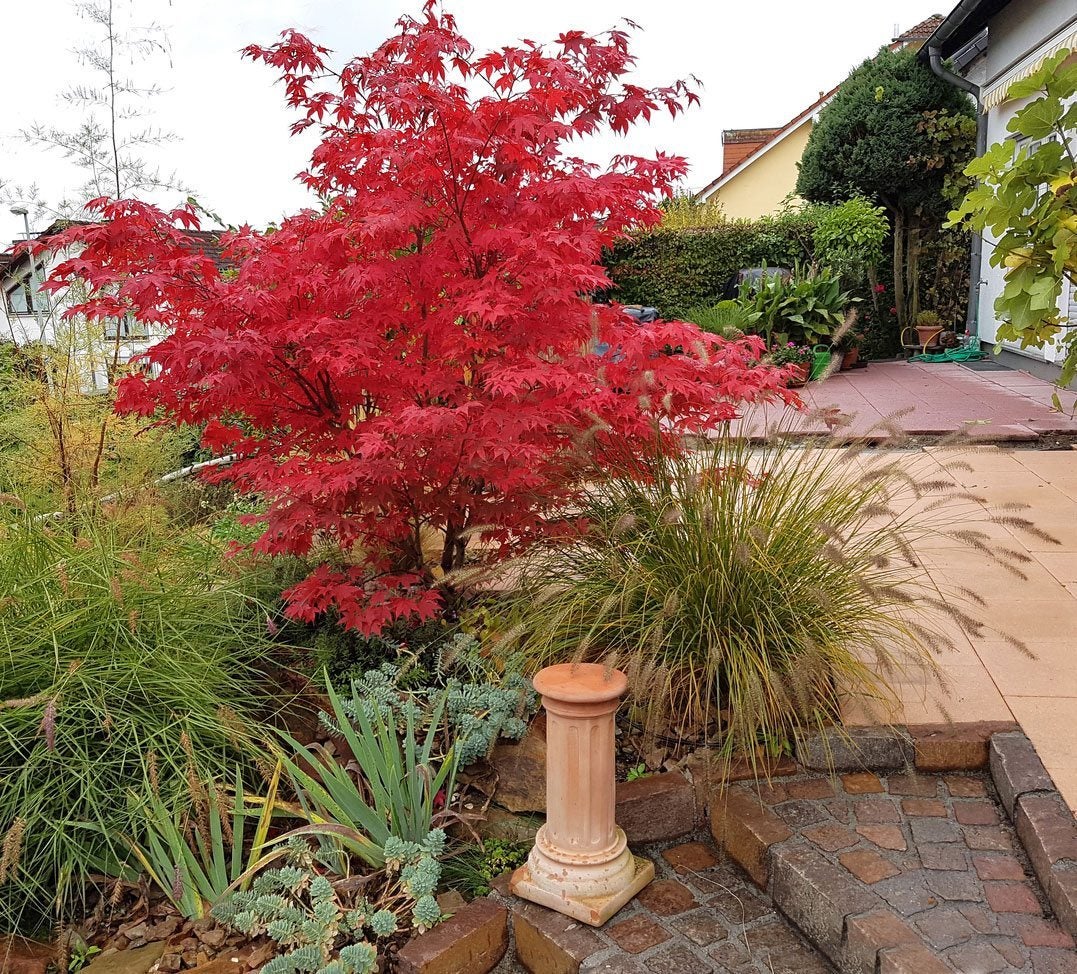Japanese Maple Feeding Habits – How To Fertilize A Japanese Maple Tree


Japanese maples are garden favorites with their graceful, slender trunks and delicate leaves. They make eye-catching focal points for any backyard, and many cultivars delight you with fiery fall displays. To keep your Japanese maple happy, you’ll need to site it correctly and apply fertilizer appropriately. If you want to learn when and how to fertilize a Japanese maple tree, read on.
Japanese Maple Feeding and Care
A Japanese maple brings such beautiful texture and color to your garden that you’ll want to take top care of the tree. It isn’t as picky as you might think, but it does have some definite preferences.
Finding a good site for your Japanese maple is the single best thing you can do to keep that tree healthy. The placement of your tree will determine how attractive and lush it will look and even how long it will live. Japanese maples require well-draining soil and will do poorly in clay or wet soil.
Most of the trees thrive in a site that gets some sun in the morning but shade in the afternoon. Both strong winds and hot sun can stress or even kill a maple. Maple species are understory plants in the wild, and excess sun can be very wounding to your tree.
Protect your tree at least until it has established a mature root system. Fertilizing Japanese maples is an important part of the nurturing process. However, a little Japanese maple fertilizer is enough, so exercise discretion in Japanese maple feeding.
When to Fertilize Japanese Maples
It’s important to apply fertilizer to plants at the appropriate time. The first rule to keep in mind is not to start fertilizing Japanese maples too early. Don’t think that a newly transplanted tree needs feeding immediately.
Once you plant the trees, wait at least until their second growing season before fertilizing Japanese maples. You’ll want to give the plants ample time to adapt to their new conditions. When you do start feeding Japanese maples, do so in late winter while the ground is still frozen.
Sign up for the Gardening Know How newsletter today and receive a free copy of our e-book "How to Grow Delicious Tomatoes".
Alternatively, start Japanese maple feeding after the last freeze in spring.
How to Fertilize Japanese Maples
When you start fertilizing Japanese maples, your goal should be to maintain a constant low level of fertility. This moderate fertilization practice will keep your maples healthy. Do not apply high levels of nitrogen to the soil around your maples. Japanese maples look best if they grow at a slower speed. High amounts of nitrogen results in excessively fast growth that will weaken the plant.
What to use for Japanese maple feeding? Try a controlled release type fertilizer. If you want to use slow-release fertilizer pellets, don’t just scatter the Japanese maple fertilizer on the soil surface since this results in sporadic releases. Instead, bore holes around 6 inches (15 cm.) deep into the soil around the tree, about halfway between the main trunk and the drip line of the branches.
Divide the fertilizer between the holes and tuck the pellets into them. Fill the rest of the holes with soil. Irrigate well.

Teo Spengler is a master gardener and a docent at the San Francisco Botanical Garden, where she hosts public tours. She has studied horticulture and written about nature, trees, plants, and gardening for more than two decades, following a career as an attorney and legal writer. Her extended family includes some 30 houseplants and hundreds of outdoor plants, including 250 trees, which are her main passion. Spengler currently splits her life between San Francisco and the French Basque Country, though she was raised in Alaska, giving her experience of gardening in a range of climates.